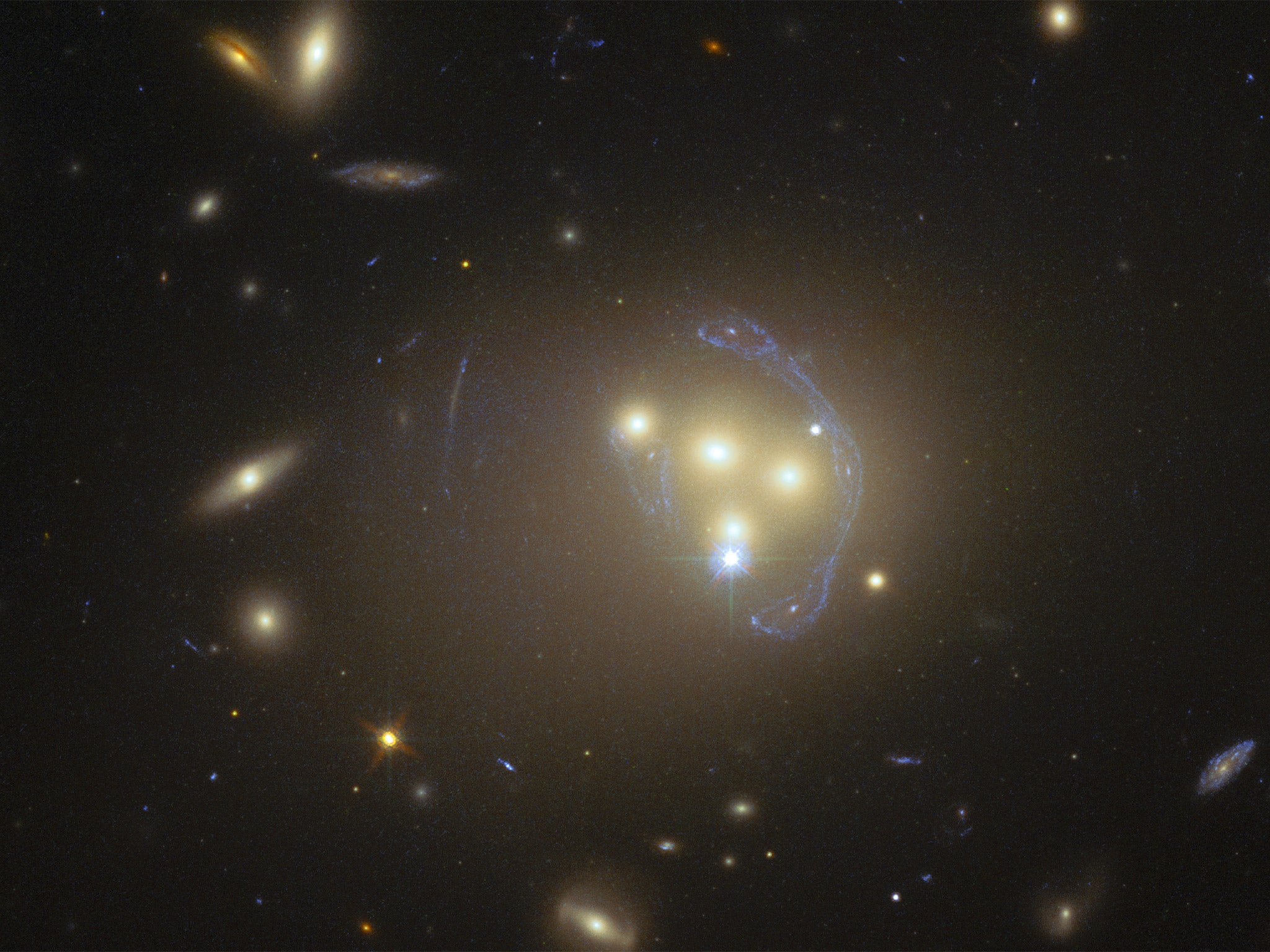'Dark matter' not as dark as first thought: Scientists find it interacts with forces other than just gravity
Hubble telescope enables first view of the cosmic entity 'interacting with itself'

Your support helps us to tell the story
From reproductive rights to climate change to Big Tech, The Independent is on the ground when the story is developing. Whether it's investigating the financials of Elon Musk's pro-Trump PAC or producing our latest documentary, 'The A Word', which shines a light on the American women fighting for reproductive rights, we know how important it is to parse out the facts from the messaging.
At such a critical moment in US history, we need reporters on the ground. Your donation allows us to keep sending journalists to speak to both sides of the story.
The Independent is trusted by Americans across the entire political spectrum. And unlike many other quality news outlets, we choose not to lock Americans out of our reporting and analysis with paywalls. We believe quality journalism should be available to everyone, paid for by those who can afford it.
Your support makes all the difference.Dark matter may not be so dark after all, after scientists witnessed the mysterious cosmic entity interacting with the universe around it an entirely new way.
Despite accounting for an estimated 85 per cent of matter in the Universe, dark matter has never been seen directly by any scientific instruments. Its existence has only been inferred by its gravitational effects.
But astronomers have now for the first time witnessed dark matter apparently “slowing down” after interaction with other dark matter - suggesting it is capable of engaging with a force other than gravity.
“We used to think that dark matter sits around, minding its own business. But if it slowed down during this collision, this could be the first dynamical evidence that dark matter notices the world around it,” said Richard Massey of Durham University. who led the research.
“Dark matter may not be completely ‘dark’ after all.”
Dark matter can only be detected indirectly by the way it bends the light of distant galaxies in a process known as gravitational lensing.
Exploiting this phenomenon, an international team of astronomers using the Hubble Space Telescope took images of a massive simultaneous collision in deep space between four distant galaxies.
The researchers found that the dark matter associated with the colliding galaxies has become disconnected with this visible mass of colliding stars, suggesting that it has come under the influence of a force other than gravity, probably by interacting with itself.
“The observations show that dark matter has ended up in a different place to the stars in the galaxy it was associated with. It has become offset in some way, and that’s pretty unusual,” Dr Massey said.
“We’ve been trying to think of other things that would cause this offset and there’s nothing else we can think of that would have this effect other than dark matter interacting with itself. This is the first step in figuring out what dark matter is. To see it behaving in this way is the first positive thing we’ve seen dark matter do,” he added.
An earlier study published last month examined the behaviour of dark matter during 72 “high speed” collisions of clusters containing thousands of galaxies. This suggested very little or no interaction between dark matter.
However, the latest study published this week in the Monthly Notices of the Royal Astronomical Society examined the relatively slower speed collision of just four galaxies in a cluster known as Abell 3827, which took place over hundreds of millions of years.
The different nature of this collision means that even a very low level of interaction can eventually create a detectable lag between the galaxy’s dark matter and its stars, which continued to collide, Dr Massey said.
Professor Liliya Williams of the University of Minnesota, a senior member of the team, said: “Our observation suggests that dark matter might be able to interact with more forces than just gravity. The parallel Universe going on around us has just got more interesting. The dark sector could contain rich physics and potentially complex behaviour.”
Calculations suggest that the clump of dark matter associated with cluster of four galaxies is offset in space by a distance of about 5,000 light years, equivalent to about 50,000 million million kilometres – a distance that would take Nasa Voyager spacecraft, the most distant man-made object, some 90 million years to travel.
“It sounds a long way but in cosmic terms it’s actually quite small. We were lucky to see it and it was only possible because of the power of the Hubble space telescope and the fact that one of the galaxies was perfectly aligned so that we could see the gravitational lensing effect,” Dr Massey said.
Explainer: What the historic picture above shows
The four galaxies in this cluster are involved in a massive collision taking place over a period of hundreds of millions of years. As the topmost of the four galaxies in the image begins to collide, it has left its dark matter trailing behind.
The dark matter in this image is invisible, but it can be detected by the way it bends the light of an even more distant galaxy, in a process known as gravitational lensing, which has left a distorted image seen here as an arc of blue light just to the right of the cluster.
The discovery that dark matters trails behind galaxies in this way suggests it is not perfectly ‘dark’ after all.
Join our commenting forum
Join thought-provoking conversations, follow other Independent readers and see their replies
Comments